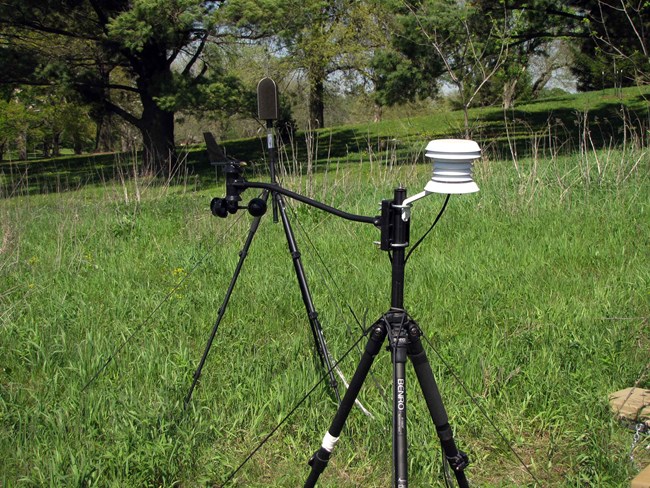Last updated: November 4, 2018
Article
Acoustic Monitoring At Herbert Hoover National Historic Site

NPS Photo by Adam Prato
Why Study Sound?
Surveys of Americans have revealed that many think the chance to experience natural quiet and the sounds of nature was a very important reason for having national parks. Most park visitors consider enjoyment of natural quiet and the sounds of nature as compelling reasons for visiting national parks.
Sound At Herbert Hoover
In May and June of 2013 scientists from the NPS Natural Sounds and Night Skies Division used acoustical monitoring equipment to study sounds at Herbert Hoover National Historic Site. They collected sound pressure level data, meteorological data, and continuous audio from one site between the Gravesite of President and Mrs. Hoover and the tallgrass prairie for approximately 30 days. The results gave a snapshot of sound levels within the park, and are intended to provide the park with baseline information to inform management decisions.
Human-caused noise was audible nearly 100 percent of the time in HEHO’s acoustic environment. A detailed analysis of audibility at this site found that four major noise sources (aircraft, building sounds, grounds care, and vehicles) contributed significant amounts of noise to the acoustical environment. Vehicles were the most common source of human-caused noise at HEHO, and were audible 90 to 100 percent of the time at all hours of the day and night. This was primarily from traffic on nearby Interstate 80, but also included sounds of vehicles from park visitors and local residential traffic.
Building sounds, which included HVAC systems associated with park buildings and the ringing of nearby church bells, could be heard up to 9 percent of the time between the hours of 8 a.m. and 7 p.m. Sounds from grounds care (like lawnmowers and leaf blowers) could be heard up to 25 percent of the time between the hours of 7 a.m. and 4 p.m. Aircraft were heard less frequently than other prevalent sound sources, but could still be heard up to 5 percent of the time during both day and night. Other sounds heard during the monitoring period included trains, people, and the alarm from the West Branch Fire Department. Despite the relatively high levels of human-caused noise, was audible over 25 percent of the time, and birds were audible nearly 100 percent of the time during the day.
